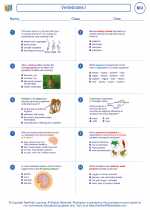Nuclear Decay
Nuclear decay, also known as radioactive decay, is the process by which an unstable atomic nucleus loses energy by emitting radiation in the form of alpha particles, beta particles, or gamma rays. This process results in the transformation of the original nucleus into a different nucleus or a different energy state. There are three main types of nuclear decay: alpha decay, beta decay, and gamma decay.
Alpha Decay
Alpha decay occurs when an unstable nucleus emits an alpha particle, which consists of two protons and two neutrons. This process reduces the atomic number of the nucleus by two and the mass number by four.
Beta Decay
Beta decay involves the emission of a beta particle, which can be either an electron (beta-minus decay) or a positron (beta-plus decay). Beta-minus decay occurs when a neutron in the nucleus is transformed into a proton, an electron, and an antineutrino. Beta-plus decay occurs when a proton in the nucleus is transformed into a neutron, a positron, and a neutrino.
Gamma Decay
Gamma decay occurs when an excited nucleus releases energy in the form of gamma rays without changing its atomic number or mass number. This process often accompanies alpha or beta decay and serves to stabilize the nucleus.
Study Guide
To understand nuclear decay, it is important to grasp the concepts of atomic structure, isotopes, and the types of radioactive decay. Here are some key points to focus on when studying nuclear decay:
- Understand the structure of an atom, including the nucleus, protons, neutrons, and electrons.
- Learn about isotopes and how they differ from each other in terms of atomic mass and stability.
- Explore the concept of radioactive decay and the different types of decay processes (alpha, beta, and gamma decay).
- Understand the principles of half-life and how it is used to measure the rate of decay of radioactive isotopes.
- Study the applications of nuclear decay, such as carbon dating, medical imaging, and nuclear energy production.
When studying nuclear decay, it can be helpful to work through practice problems involving decay equations, half-life calculations, and decay series. Additionally, exploring real-world examples of nuclear decay and its impact on the environment and human health can provide a deeper understanding of the topic.
By mastering the principles of nuclear decay, you will gain insights into the behavior of radioactive isotopes and their significance in various scientific and technological fields.
.◂Biology Worksheets and Study Guides High School. Vertebrates I

 Worksheet/Answer key
Worksheet/Answer key
 Worksheet/Answer key
Worksheet/Answer key
 Vocabulary/Answer key
Vocabulary/Answer key
 Vocabulary/Answer key
Vocabulary/Answer key
 Vocabulary/Answer key
Vocabulary/Answer key
